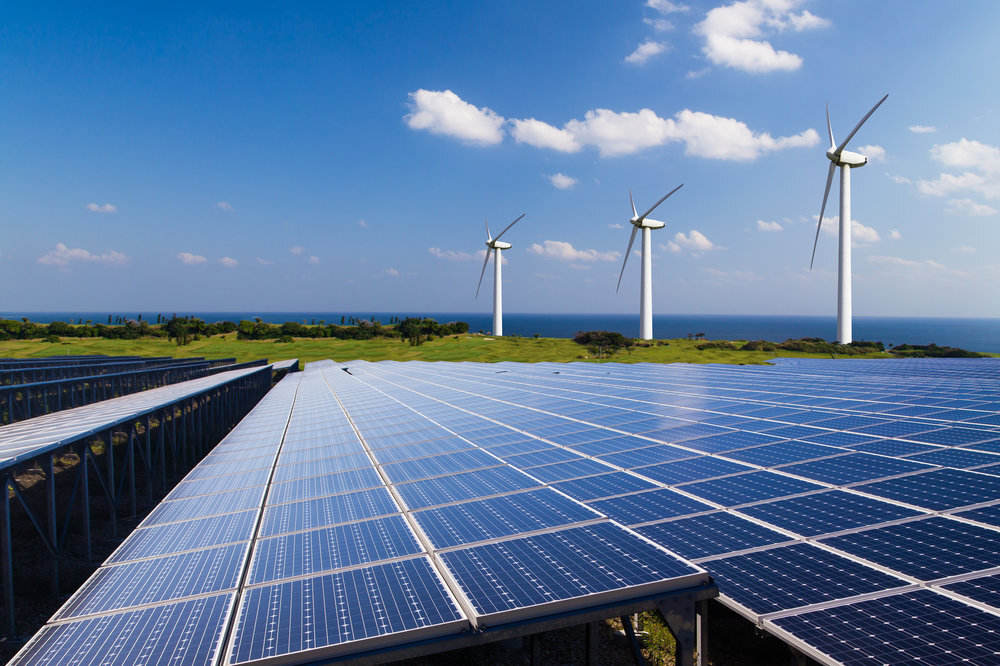The Truth Behind The Solar Energy Industry
Solar panels provide a clean energy source, helping to lessen the consequences of climate-impacting emissions. They are not a complete panacea, however, coming with both labor and environmental issues.
The production of solar panels creates “third-country risk” – one of the greatest issues within the solar industry. This is because the Xinjiang Uyghur Autonomous Region of China dominates polysilicon manufacturing, a key ingredient in solar panel production, at ⅓ of the global capacity. In Xinjiang, Uyghurs, Kazakhs, and other ethnic minorities have been subjected to forced and bonded labor under the pretense of “vocational skills training,” “re-education,” and “poverty alleviation” to provide cheap labor. This is illustrated through a ghost of an Uyghur worker, crushed under a pile of old solar panels. Workers are put under excessive surveillance, abusive living and working conditions, movement restriction through internment, threats, physical and/or sexual violence, and other inhuman treatment, despite claims that the government is increasing employment opportunities and incomes for minorities. Under international law, this treatment could amount to crimes against humanity. Overall, the use of forced labor in Xinjiang raises serious concerns about human rights abuses and modern slavery in the solar panel supply chain.
In response to these concerns, the United States of America passed the Uyghur Forced Labour Prevention Act, however, questions are being raised about the legitimacy of distinct non-Chinese supply chains that have since developed. Major Chinese photovoltaic (PV) producers have established supply chains in Southeast Asian countries to avoid the US legislation, stating that products are being manufactured using non-Chinese materials. Within the cartoon, this is demonstrated by a distant factory facing the backs of major wealthy cooperation heads focused on generating maximum profit. However, recent customs data shows a 700% rise in polysilicon exports from China to Vietnam making this claim far-fetched. Additionally, there are reports that 9.3% of solar panels imported into the United States originating from India relate to forced labor in China. As a result of a lack of resources and capacity to fully implement the act and track supply chains, companies easily evade legislative attempts.
Solar energy panel production also poses serious environmental risks. Solar panels can last 25–30 years under ideal circumstances and with regular maintenance. While some panel components can be recycled, it is not a common practice because it costs between $20 to $30 to recycle a single panel against the cost of $1 to $2 to landfill. Consequently, the majority of panels wind up in landfills, where they release lead and cadmium telluride into the atmosphere, among other hazardous substances. Both substances pose risks to biodiversity and health in the environment as they drastically inhibit and damage mammalian systems. This accumulation of panels in landfills is illustrated through a pile of old, strewn panels, stacked on top of each other in the cartoon.
Claims made by the solar industry that it is less carbon intensive than other energy sources are questionable. Global organizations such as the IEA and IPCC have continued to report that solar PV operates at 48 gCO2/kWh. However, this information excludes Chinese data from the PV industry. Based on research by Enrio Mariutti, depending on the energy mix utilized to power PV generation, an energy-intensive mining and production process, these estimates are closer to 170 or 250 gCO2/kWh, showing a substantial difference in the impacts of solar panel use on climate-impacting emissions. As China powers most of its plants on coal, plumes of smoke in the cartoon represent the resulting emissions of panel manufacturing. With this carbon data in mind and considering the lifespan and recycling of panels, solar energy is not substantially better than other energy sources such as natural gas at 50 gCO2/kWh with carbon capture.
The above demonstrates that the human and environmental impacts of the production of solar panels, and therefore the generation of energy by them, may not be as beneficial as it appears on the surface.
